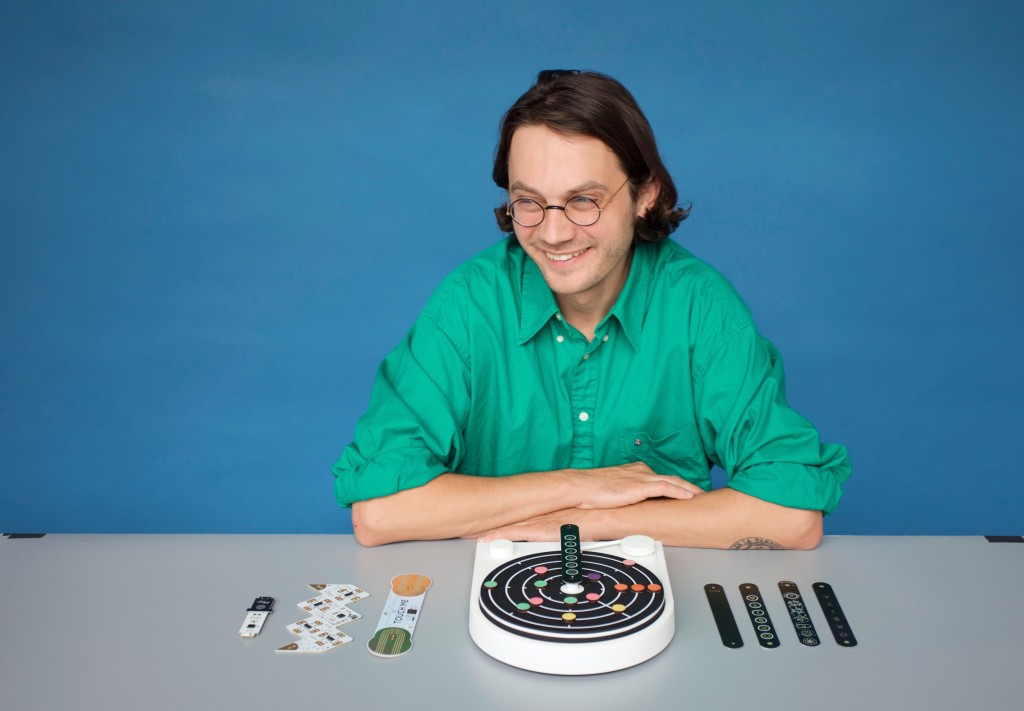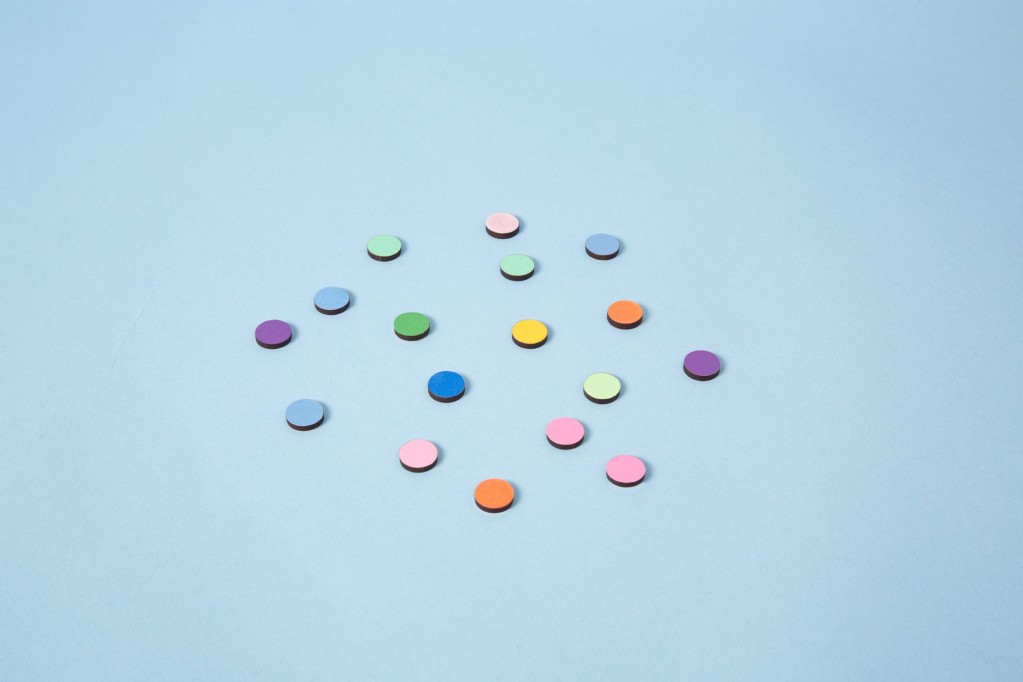Inspired by objects like wall clocks and reel-to-reel tape machines, Orbita is a sequencer whose interaction is physical and kinetic, via small discs placed on a turntable. The twist is, it’s not just a design demo – you’ll be able to buy one yourself.

Orbita is an ambitious tangible interface design from Playtronica founder Sasha Pas and Swedish-based designed Axel Bluhme. Playtronica have worked in physical interaction before – TouchMe and Playtron also encouraged contact and transformed objects into instruments. But Orbita goes beyond those fairly modest kits and proposes an electromechanical, kinetic design. There’s a turntable with colored discs placed on metal tracks, giving the design its orbit-inspired name. Clever software opens up creative possibilities from simple educational play to more advanced studio and performance use.

The product launches as a Kickstarter campaign next month, with a price of around 250 EUR. And that’s relevant if they can pull this off – these kinds of projects show up regularly as design studies but tend to be one-off prototypes or experiments or art installations. Orbita will be an actual product.
Playtronica’s Jesse and Sasha send over this short film showing the Orbita in use as a trigger source with instruments from Arturia, MOD Devices, Moog, and Roland. (The MOD Devices DUO is known best as an effects unit, but that powerful little box also can be a synth if you trigger it – making the Orbita make sense here.)
Also, meet Chim the dog.
The elements of Orbita:
- Four orbits, metal tracks, with four corresponding sensors
- 12 colored magnetic discs and color stickers
- Pattern grid, for reference (though you can also place the discs – that is, the notes/triggers – off-grid)
- A companion Web app, which can be used to place the instrument in standalone mode (that is, triggering its own sounds)
- USB-C connection (with cable)
- Open source firmware
Because all of this happens on a turntable, the simple interface is open to other possibilities. You have analog control of the speed as well as physical placement on the tracks – and can also “scratch” the sequence by turning the turntable directly. You can also mute and unmute the four tracks.
The USB-C connection now means not only connection to computers, but phones and tablets, as well.


As the video demonstrates, you can use this as a sequencer source. But for folks lacking a ton of outboard gear (like educational settings), you can also use the Web app to produce sounds standalone.
There are two modes, according to how the tracks are mapped:
- Instrument mode): all on the same MIDI channel, with each track a different octave – so imagine a 48-key keyboard; 12 discs times four tracks = 48 notes or sounds. So this is what’s used in standalone mode, but also could be a convenient mapping from Orbita to a single synth/sound source.
- Multi-channel mode: Each track is a different MIDI channel. That’s what’s shown in the video, and it’s intended for use with multiple software or hardware synths.
They’ve also been packing in features and additions over the summer as the Kickstarter approaches. That includes working with software developer Zois Loumakis, aka Alkman, who is building a Max patch with additional features and Euclidean rhythmic possibilities:
- Virtual representation of Orbita sequences
- Assign velocity to individual notes
- Assign arpeggios to individual notes
- Time quantization
- Сustom playback settings for each of the track (for example, play each second note only)
- Probability of note play through algorithmic percentile control
There are other extras coming to the Kickstarter, too, like a separate PCB with a black-and-white optical sensor which would allow you to draw in additional patterns onto a plate. (I can kind of visualize what they mean here, but will get more details!)
Beautiful as this is, I do imagine some people will find the interface limiting – even if you have continuous control of speed and the possibility of polyrhythms and the like, just because of the restrictions of tracks, sensors, and limited objects. But the possibility of creatively expanding the tool via software and firmware does balance that out, and 250 EUR is an incredible price for this kind of experimental design. And heck, it’s still quite a lot more intuitive and useful than the original TB-303 interface. Plus, it’s exciting to watch Playtronica build an array of related projects around interaction and design with music.
It also seems this could open up new kinetic and graphical creations in general – it’s a bold move into productizing something that has been used in experimental contexts for about a century now.
Keep an eye out for the Kickstarter.
https://orbita.playtronica.com/